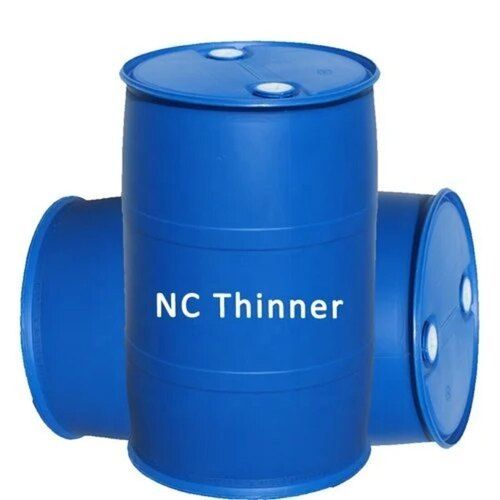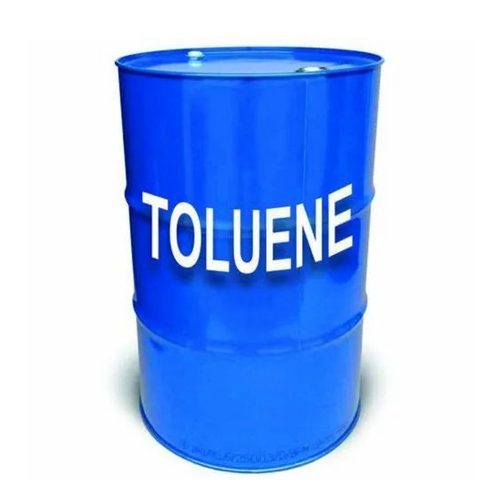Liquid Nc Thinner
उत्पाद विवरण:
- कैस नं 78-93-3
- टाइप करें
- एप्लीकेशन The specifications for a liquid NC (Nitrocellulose) thinner may vary depending on the specific application and industry requirements. Nitrocellulose thinners are commonly used in the paint and coatings industry for thinning nitrocellulose-based lacquers and enamels.
- अनुप्रयोग विधि
- कच्चा माल various Solvents
- भौतिक अवस्था
- उपयोग The specifications for a liquid NC (Nitrocellulose) thinner may vary depending on the specific application and industry requirements. Nitrocellulose thinners are commonly used in the paint and coatings industry for thinning nitrocellulose-based lacquers and enamels.
- अधिक देखने के लिए क्लिक करें
मूल्य और मात्रा
- 200
उत्पाद की विशेषताएं
- The specifications for a liquid NC (Nitrocellulose) thinner may vary depending on the specific application and industry requirements. Nitrocellulose thinners are commonly used in the paint and coatings industry for thinning nitrocellulose-based lacquers and enamels.
- 78-93-3
- The specifications for a liquid NC (Nitrocellulose) thinner may vary depending on the specific application and industry requirements. Nitrocellulose thinners are commonly used in the paint and coatings industry for thinning nitrocellulose-based lacquers and enamels.
- various Solvents
- घंटे
व्यापार सूचना
- DAHEJ (INDAH1)
- प्रति दिन
- दिन
उत्पाद वर्णन
The specifications for a liquid NC (Nitrocellulose) thinner may vary depending on the specific application and industry requirements. Nitrocellulose thinners are commonly used in the paint and coatings industry for thinning nitrocellulose-based lacquers and enamels. Here are some general specifications that might be associated with a liquid NC thinner:
Chemical Composition:
The primary component of the thinner is often a specific solvent or blend of solvents. Common solvents include acetone, toluene, and ethyl acetate.
Solvent Purity:
The purity of the solvents used in the formulation is crucial. High-purity solvents help ensure the quality and performance of the thinner. Impurities can negatively impact the final coating.
Compatibility:
The thinner should be compatible with the specific nitrocellulose-based lacquers or enamels it is intended to be used with. Compatibility issues can lead to problems like poor adhesion or coating defects.
Flash Point:
The flash point is the temperature at which the thinner gives off vapors that can ignite in the presence of an open flame or spark. Understanding the flash point is important for safety considerations.
Evaporation Rate:
The evaporation rate determines how quickly the thinner evaporates after application. This property is important for achieving the desired application characteristics, such as flow and leveling.
The color of the thinner may be specified to ensure that it does not introduce unwanted color to the final coating. Often, a colorless or slightly colored liquid is preferred.
Odor:
The odor of the thinner is a consideration, especially in applications where strong odors may be undesirable. Low-odor formulations are often preferred.
Viscosity:
Viscosity can affect the ease of application and leveling of the coating. The viscosity of the thinner should be suitable for the application method used (spraying, brushing, etc.).
Storage and Handling Guidelines:
Specifications may include recommendations for storage conditions, such as avoiding exposure to extreme temperatures or direct sunlight.
Safety Data Sheet (SDS):
The supplier should provide a Safety Data Sheet (SDS) that includes information on the hazards, safe handling procedures, first aid measures, and emergency response for the NC thinner.
Always consult with the supplier or manufacturer for the most accurate and up-to-date information on liquid NC thinner specifications. Additionally, ensure compliance with relevant regulations and industry standards for the specific application.

Price: Â
- 50
- 100
- 200
- 250
- 500
- 1000+








